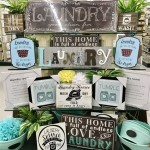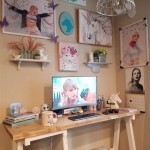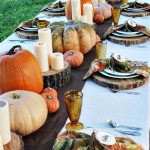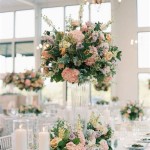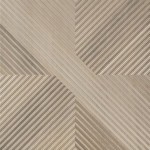Decorative Plate Racks For Wall: Enhancing Storage and Aesthetics
Decorative plate racks for walls offer a practical storage solution while simultaneously serving as a decorative element in a home. Moving beyond simple utilitarian storage, these racks transform ordinary plates into visual displays, contributing to the overall aesthetic appeal of a room. They are available in a wide array of styles, materials, and sizes, allowing homeowners to select options that complement their existing decor and personal preferences.
The primary function of a decorative plate rack is, of course, to provide a safe and organized space for storing plates. This is especially useful in kitchens with limited cabinet space or for showcasing collectible plates. By utilizing vertical space, plate racks keep plates readily accessible and prevent clutter on countertops and in cabinets. This can be particularly beneficial for those who frequently use their fine china or display plates for special occasions.
Beyond their practical purpose, decorative plate racks add a significant aesthetic dimension to a room. They transform plates from mere tableware into artwork, allowing homeowners to curate a display that reflects their personal style. Whether it's a collection of antique china, hand-painted ceramics, or contemporary designs, a plate rack elevates the plates to become a focal point in the room. The visual impact of a well-arranged plate rack can significantly enhance the overall ambiance of a kitchen, dining room, or even a living room.
The versatility of decorative plate racks is another key advantage. They can be incorporated into various design schemes, from traditional to modern. A rustic wooden rack might suit a farmhouse-style kitchen, while a sleek metal rack could complement a contemporary living space. This adaptability makes them a valuable addition to any home, regardless of its existing architectural style.
Choosing the Right Material and Style
The selection of materials and styles for decorative plate racks is extensive. Understanding the options available is crucial for choosing a rack that aligns with one's taste and functional needs. Different materials offer varying levels of durability, aesthetic appeal, and maintenance requirements.
Wood: Wooden plate racks are a classic choice, offering warmth and a natural aesthetic. They are available in various wood types, each with its unique grain and color. Pine, oak, and maple are popular options, providing durability and a timeless look. Wooden racks can be stained or painted to match existing cabinetry or other furniture. They are particularly well-suited for traditional, country, or farmhouse-style kitchens. However, wood can be susceptible to moisture damage, so it's essential to choose a rack treated to resist humidity, especially in a kitchen environment.
Metal: Metal plate racks offer a more contemporary and industrial aesthetic. They are typically made of wrought iron, stainless steel, or powder-coated steel. Wrought iron racks are known for their durability and ornate designs, often featuring intricate scrollwork. Stainless steel racks offer a clean, modern look and are resistant to rust and corrosion. Powder-coated steel racks come in a variety of colors, allowing for greater customization. Metal racks are generally easier to clean than wooden racks and are well-suited for modern or minimalist interiors.
Wicker and Rattan: Wicker and rattan plate racks provide a bohemian or coastal vibe. These natural materials offer a lightweight and airy feel, adding texture and visual interest to a room. They are often handcrafted, adding a unique touch to the decor. Wicker and rattan racks are best suited for displaying lighter-weight plates and are ideal for creating a relaxed and informal atmosphere. However, they may require more frequent cleaning to remove dust and debris.
Style Considerations: Beyond the material, the style of the plate rack is another important factor. Consider the overall design of the room and choose a rack that complements the existing aesthetic. Simple, minimalist racks are ideal for modern spaces, while ornate, vintage-inspired racks are better suited for traditional settings. Also, consider the number of plates needed to be displayed and choose a rack with adequate capacity. The size and spacing of the shelves or slots should also be considered to ensure that the plates fit comfortably and securely.
Installation and Placement Considerations
Proper installation and placement are crucial for ensuring the safety and stability of a decorative plate rack, as well as maximizing its aesthetic impact. Incorrect installation can lead to the rack falling, potentially damaging the plates and causing injury. Careful planning and execution are essential for a successful installation.
Wall Type: The type of wall will determine the appropriate mounting hardware. Drywall requires the use of anchors to provide sufficient support for the weight of the rack and the plates. Studs offer the most secure mounting point, but they may not always be located in the desired position. Brick or concrete walls require specialized drill bits and anchors. Always consult the manufacturer's instructions for the specific type of rack being installed.
Height and Location: The height and location of the plate rack should be carefully considered. Generally, the rack should be mounted at a height that allows for easy viewing and access to the plates. It's also important to ensure that the rack is not placed in a location where it could be easily bumped or knocked over. Avoid placing the rack directly above a stove or sink, as it could be exposed to excessive heat or moisture. A well-lit location will enhance the visual impact of the displayed plates.
Leveling: Ensuring that the plate rack is perfectly level is essential for both aesthetic and functional reasons. A crooked rack will be visually distracting and could potentially cause plates to slide off. Use a level to ensure that the rack is mounted straight before tightening the screws. Adjustments may be necessary during the installation process to achieve a perfectly level position.
Weight Capacity: Before installing the plate rack, determine its weight capacity and ensure that it is sufficient for the number and type of plates being displayed. Overloading the rack could lead to it collapsing or pulling away from the wall. Distribute the weight evenly across the rack to prevent uneven stress on the mounting points. If displaying heavier plates, consider using a rack with a higher weight capacity and reinforcing the mounting points with additional hardware.
Arranging and Maintaining Your Display
Once the plate rack is installed, the next step is to arrange the plates in a visually appealing manner. This is an opportunity to showcase personal style and create a display that is both aesthetically pleasing and reflective of individual taste.
Color Coordination: Consider the color palette of the plates when arranging them on the rack. Grouping plates with similar colors together can create a cohesive and harmonious display. Alternatively, create a more eclectic look by mixing and matching plates with different colors and patterns. The goal is to create a visually balanced arrangement that is pleasing to the eye.
Plate Size and Shape: Vary the size and shape of the plates to create visual interest. Mixing plates of different sizes adds depth and dimension to the display. Consider arranging larger plates at the bottom of the rack and smaller plates at the top to create a sense of balance. Experiment with different arrangements until the desired look is achieved.
Creating a Focal Point: Identify a focal point for the display and arrange the plates around it. A larger, more decorative plate can serve as the focal point, drawing the eye and creating a sense of visual hierarchy. Alternatively, a grouping of smaller plates can be arranged to create a focal point. The focal point should be the most visually interesting element of the display.
Regular Cleaning: To maintain the beauty of the display, regular cleaning is essential. Dust the plates and the rack regularly to prevent buildup. Use a soft cloth and a gentle cleaning solution to remove any stubborn dirt or stains. Avoid using abrasive cleaners, as they can damage the plates or the finish of the rack. For wooden racks, apply a furniture polish periodically to protect the wood and maintain its luster. For metal racks, use a metal cleaner to remove any rust or corrosion.
Decorative plate racks for walls provide a functional and aesthetically pleasing solution for storing and displaying plates. By choosing the right material, style, and arrangement, homeowners can transform ordinary plates into a stunning visual display that enhances the overall ambiance of their home. Proper installation and regular maintenance will ensure that the plate rack remains a beautiful and functional addition to the decor for years to come.

Plate Rack Wall Hanging Wood Farmhouse Style And Cutting Board Display Shelf Kitchen Handmade

5 Ways To Decorate A Diy Plate Rack

5 Favorite Farmhouse Plate Racks Worthing Court Diy Home Decor Made Easy

Kitchen Plate Racks

Plate Hangers Chelsea Fancy Single 10 14

How To Style A Wall Plate Rack On Sutton Place

10 Easy Pieces Wall Mounted Plate Racks Remodelista

5 Ways To Decorate A Diy Plate Rack

A New Plate Rack In The Kitchen Sincerely Marie Designs

Wrought Iron Plate Hanger Vertical Three 9 11 Plates Racks And Hangers

